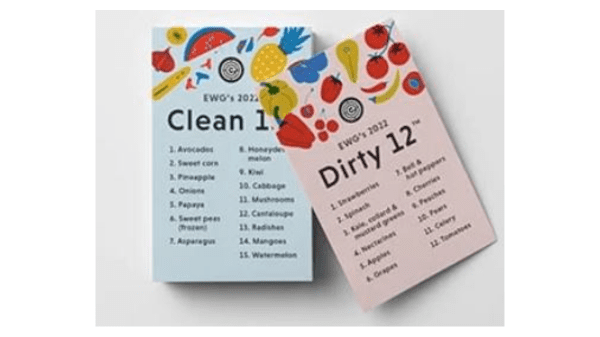
The Environmental Working Group (EWG) released its contentious Dirty Dozen and Clean Fifteen annual guides for consumers to avoid pesticide residues.
The crosshairs again fall on strawberries, spinach and leafy greens as “top offenders” based on the latest tests by the USDA and Food and Drug Administration.
Produce industry groups such as the Alliance for Food and Farming say that EWG’s analysis of the pesticide data is inaccurate, and peer-reviewed research shows that not only is this list scientifically unsupportable, but it also harms public health efforts to increase consumption of nutrient-dense fruits and vegetables.
“Everyone should eat plenty of fresh fruit and vegetables, no matter how they’re grown,” said EWG toxicologist Alexis Temkin in a press release. “But shoppers have the right to know what potentially toxic substances are found on these foods, so they can make the best choices for their families, given budgetary and other concerns.”
“EWG recommends that, whenever possible, consumers purchase organic versions of Dirty Dozen produce,” said EWG science analyst Sydney Swanson in the release. “Most pesticides can’t legally be applied to produce that is grown organically.”
The alliance says the EWG admits it does not “incorporate risk assessment into the calculations. All pesticides are weighted equally, and we do not factor in the levels deemed acceptable by the EPA.”
“Consumers who are concerned about residues are advised to simply wash their fresh produce – organic and conventionally grown,” the AFF says. “According to the Federal Food and Drug Administration (FDA), washing fresh fruits and vegetables under running tap water is a healthful habit and can help remove or eliminate any residues that may be present on fruits and vegetables.”
Here is EWG’s 2022 Dirty Dozen
1. Strawberries
2. Spinach
3. Kale, collard & mustard greens
4. Nectarines
5. Apples
6. Grapes
7. Bell & hot peppers
8. Cherries
9. Peaches
10. Pears
11. Celery
12. Tomatoes
EWG’s Clean Fifteen
1. Avocados
2. Sweet corn
3. Pineapple
4. Onions
5. Papaya
6. Sweet peas (frozen)
7. Asparagus
8. Honeydew melon
9. Kiwi
10. Cabbage
11. Mushrooms
12. Cantaloupe
13. Mangoes
14. Watermelon
15. Sweet potatoes
The Environmental Working Group (EWG) released its contentious Dirty Dozen and Clean Fifteen annual guides for consumers to avoid pesticide residues.
The crosshairs again fall on strawberries, spinach and leafy greens as “top offenders” based on the latest tests by the USDA and Food and Drug Administration.
Produce industry groups such as the Alliance for Food and Farming say that EWG’s analysis of the pesticide data is inaccurate, and peer-reviewed research shows that not only is this list scientifically unsupportable, but it also harms public health efforts to increase consumption of nutrient-dense fruits and vegetables.
“Everyone should eat plenty of fresh fruit and vegetables, no matter how they’re grown,” said EWG toxicologist Alexis Temkin in a press release. “But shoppers have the right to know what potentially toxic substances are found on these foods, so they can make the best choices for their families, given budgetary and other concerns.”
“EWG recommends that, whenever possible, consumers purchase organic versions of Dirty Dozen produce,” said EWG science analyst Sydney Swanson in the release. “Most pesticides can’t legally be applied to produce that is grown organically.”
The alliance says the EWG admits it does not “incorporate risk assessment into the calculations. All pesticides are weighted equally, and we do not factor in the levels deemed acceptable by the EPA.”
“Consumers who are concerned about residues are advised to simply wash their fresh produce – organic and conventionally grown,” the AFF says. “According to the Federal Food and Drug Administration (FDA), washing fresh fruits and vegetables under running tap water is a healthful habit and can help remove or eliminate any residues that may be present on fruits and vegetables.”
Here is EWG’s 2022 Dirty Dozen
1. Strawberries
2. Spinach
3. Kale, collard & mustard greens
4. Nectarines
5. Apples
6. Grapes
7. Bell & hot peppers
8. Cherries
9. Peaches
10. Pears
11. Celery
12. Tomatoes
EWG’s Clean Fifteen
1. Avocados
2. Sweet corn
3. Pineapple
4. Onions
5. Papaya
6. Sweet peas (frozen)
7. Asparagus
8. Honeydew melon
9. Kiwi
10. Cabbage
11. Mushrooms
12. Cantaloupe
13. Mangoes
14. Watermelon
15. Sweet potatoes
Greg Johnson is Director of Media Development for Blue Book Services



